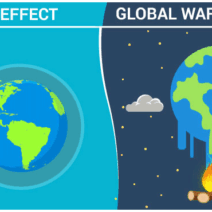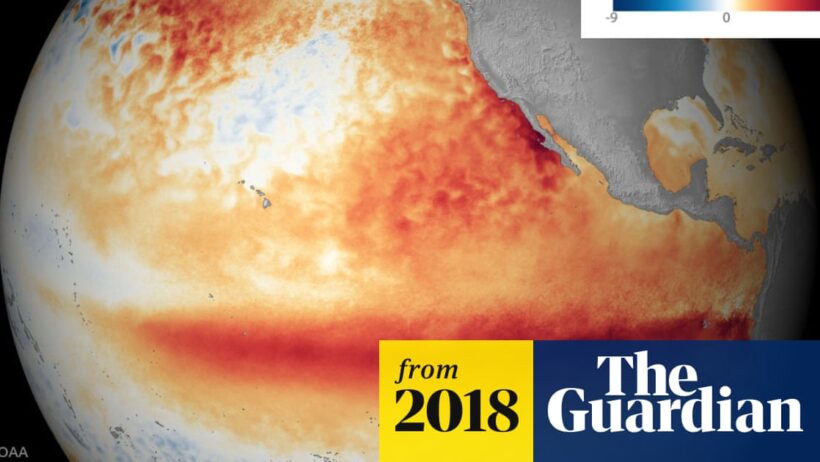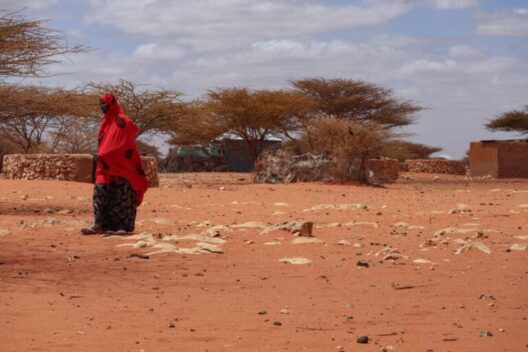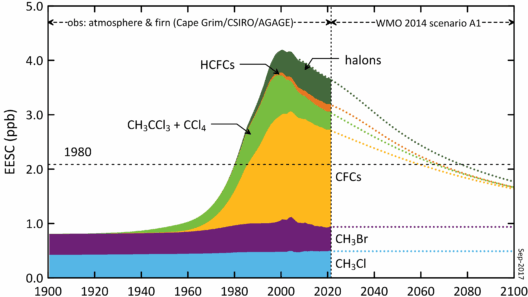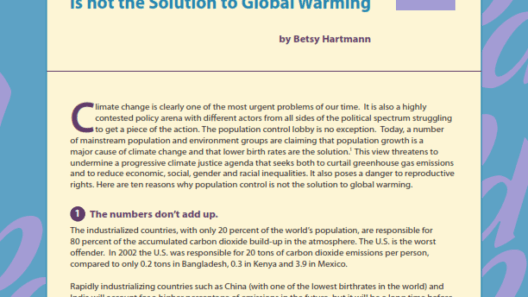As the tapestry of our planet’s climate continues to unravel, a tapestry interwoven with threads of El Niño phenomena and global warming emerges. Just as an artist deftly blends colors to create depth, scientists are unraveling the nuanced relationship between rising global temperatures and El Niño, a periodic climate phenomenon that affects weather patterns worldwide. Understanding this connection is paramount, as it holds implications for ecosystems, economies, and human livelihoods.
El Niño, characterized by the unusual warming of ocean surface temperatures in the central and eastern Pacific, acts like a maestro conducting a symphony of atmospheric changes. Its impacts can be felt thousands of miles away, influencing everything from hurricane formations to agricultural yields. As the Earth warms, the stakes grow higher, with climate change potentially acting as a catalyst that exacerbates El Niño’s effects.
A fundamental question arises: does global warming contribute to El Niño? To answer this, one must delve into the intricate dynamics of ocean-atmosphere interactions. The driving forces behind El Niño include variations in trade winds, ocean currents, and sea surface temperatures—elements that are inherently sensitive to temperature changes. Global warming, akin to a relentless sculptor, reshapes these natural forces, potentially amplifying the intensity and frequency of El Niño events.
To grasp the extent of global warming’s influence, we must first explore the mechanics of El Niño. During a typical El Niño event, weakened trade winds allow warm water to accumulate in the eastern Pacific, disrupting normal weather patterns. This phenomenon is often associated with increased rainfall in some regions and droughts in others. When global temperatures rise, the sea surface temperature baseline shifts, meaning that the warm waters associated with El Niño may become even warmer, thereby increasing the volatility of weather patterns.
The connection goes beyond merely warmer waters; it encompasses the amplification of atmospheric phenomena as well. Higher global temperatures bolster the capacity of the atmosphere to retain moisture. This results in more vigorous weather systems during El Niño events, pushing the boundaries of typical rainfall patterns and intensifying droughts in regions that are already arid. Consequently, the consequences ripple through various sectors, affecting food security, water availability, and disaster resilience.
There is also a significant body of research indicating that climate change is potentially altering the frequency and character of El Niño events. While El Niño is a naturally occurring phenomenon, anthropogenic influences shifting the Earth’s baseline climate are creating an unpredictable environment. The so-called “new normal” of climate extremes may serve as a breeding ground for more severe or prolonged El Niño episodes, raising concerns among scientists and policymakers alike.
The implications are not just confined to environmental realms; they extend into the socio-economic fabric of societies. For countries reliant on predictable agricultural cycles, the heightened irregularities brought forth by stronger El Niño events can lead to catastrophic harvest failures. The agricultural sectors in regions such as Central America and parts of Southeast Asia might find themselves reeling under unpredictable droughts or flooding. The delicate balance of local economies hangs in the balance, akin to a house of cards swaying precariously with every wind gust.
Moreover, the diaspora of climate repercussions underscores the interconnectedness of global systems. A heightened El Niño can shift ocean currents and disrupt fish populations, affecting food sources for millions globally. The cascade effects underscore the need for a holistic understanding of climate interactions, reminding us that our natural systems do not operate in isolation. They are woven into a vast network that links human survival to the health of our planet.
It is essential to consider how we can fortify our defenses against this looming threat. Adaptation strategies must be multi-faceted, incorporating scientific advances and traditional knowledge alike. Developing resilient agricultural practices, investing in sustainable water management, and improving early warning systems can help communities mitigate the effects of intensified El Niño events. Education plays a crucial role in empowering communities to understand these phenomena and adapt accordingly. By fostering a deeper awareness of the relationship between global warming and El Niño, societies can cultivate resilience in the face of uncertainty.
In the grand scheme of things, the thread connecting global warming and El Niño is becoming increasingly taut. As humans continue to tinker with the planet’s climate systems, we risk setting off a chain reaction that may yield unpredictable results. Scientists are diligently working to refine predictive models, focusing on a deeper comprehension of ocean-atmosphere dynamics and how they respond to a warming Earth.
While the intricacies of this phenomenon may seem daunting, the narrative is clear: action is imperative. As El Niño manifests itself with greater ferocity in a warming world, humanity must rise to the occasion. The dance between these two forces—global warming and El Niño—serves as a reminder of our fragile position within the natural order. The future hangs in the balance, and it calls for collective action and stewardship. The choice is ours: to adapt and innovate or to withstand the tumult of nature’s unpredictable symphony wrought by a changing climate.
Through understanding the interplay of forces, we can wield knowledge as a mighty instrument, forging paths to sustainability and resilience. As the stakes rise, so too must our commitment to safeguarding the planet, embracing both the challenge and the opportunity that lie in addressing these intertwined phenomena.


